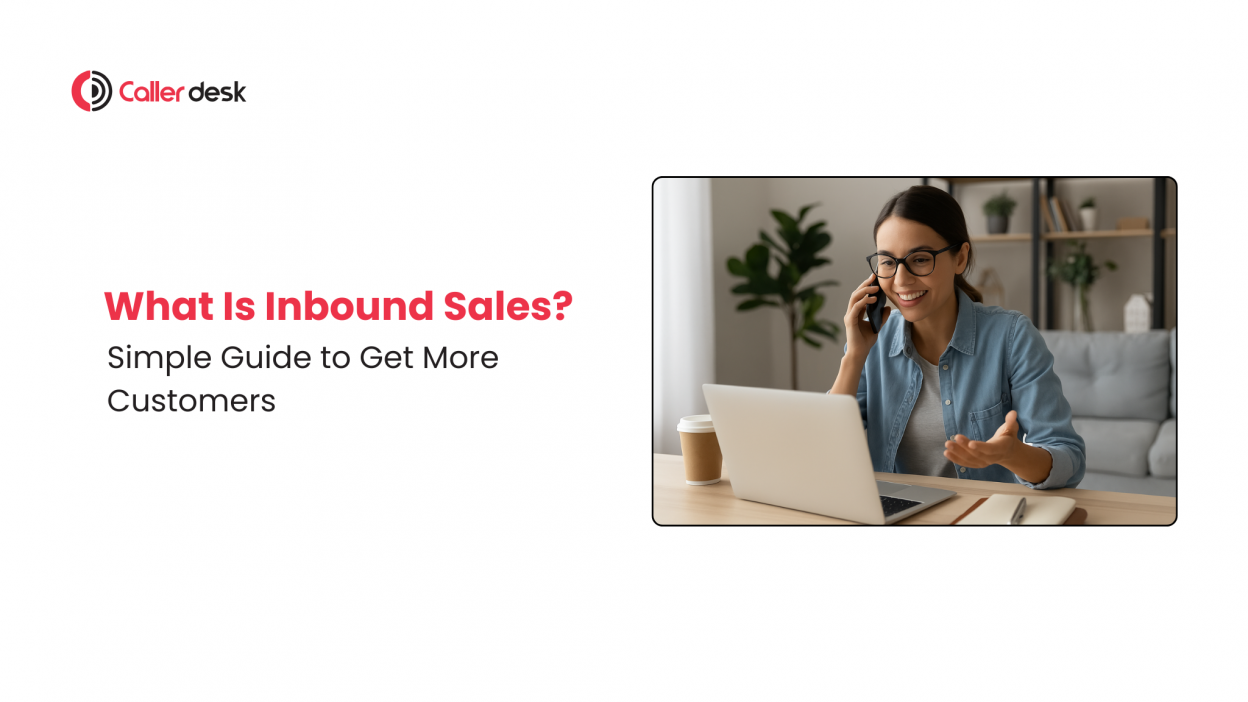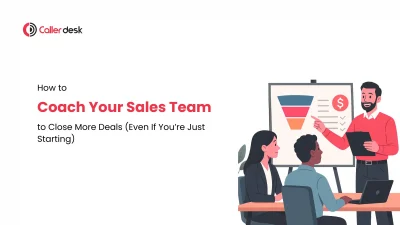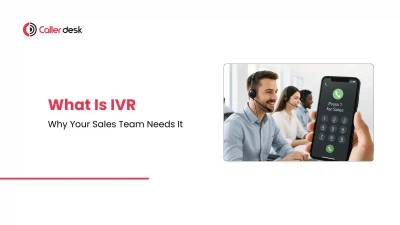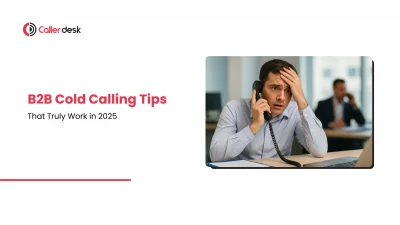Have you ever searched for a product online, checked out a few websites, and then got a call or message from someone who helped you understand how to use it?
It probably felt nice, right? No pressure. Someone genuinely trying to assist you, not pressure you into buying.
That’s what inbound sales is all about.
People today don’t want random sales calls. They want to learn, explore, and then talk to someone who actually listens and gives the right advice. IInbound sales is about engaging with people who already want to know more—you simply help them move forward.
In this blog, I’ll explain what inbound sales is, why it works better than cold calling, and how your team can use it to get more customers. We’ll also go over simple steps and smart tools to make your sales process smooth and successful.
What Is Inbound Sales?
Inbound sales focuses on connecting with people who’ve already shown curiosity about your product or service. These are not random people. They’re people who are already curious or even halfway ready to buy.
For example, someone may have:
- Searched for your product on Google
- Read your blog or seen your social media post
- Downloaded a brochure or guide
- Tried your free demo or trial
- Subscribed to your emails or newsletter
These actions show that they want to learn more about your product or service.
It’s about supporting these potential customers and guiding them toward making a decision. You’re not forcing anything—you’re just guiding them and making their decision easier.
Unlike cold calling, you’re speaking with leads who already recognize your brand and want to learn more. With inbound sales, you’re starting a conversation with someone who already knows your brand and may even be looking for a solution like yours.
Think of it like this:
Instead of knocking on strangers’ doors, you’re opening the door for people who already walked into your shop.
Why Inbound Sales Works Better Than Cold Calling
Let’s be honest—nobody likes getting unexpected sales calls from someone they don’t know, especially when they’re not even looking to buy.
That’s what cold calling is: calling random people and hoping they’re interested.
But inbound sales is the opposite—and much better.
Here’s why it works:
- You connect with leads who are actively exploring their options. They searched for your product, visited your website, or signed up for a demo. So, they’re already interested.
- You don’t interrupt them. Inbound leads come to you when they’re ready, not when you randomly call them.
- You help instead of push. Inbound sales is like being a helpful friend, not a pushy seller. You help them by listening, providing answers, and offering the right solutions.
- You build trust. When someone feels heard and helped, they’re more likely to trust your business—and buy from you.
How Inbound Sales Works (Step-by-Step)
Let’s look at the steps to convert curious leads into satisfied buyers using inbound sales.
1: Attract the Right People to Your Business
Before you can sell anything, people need to find you.
That’s where your marketing team comes in.
They create helpful and interesting content like:
- Blog articles that solve common problems
- Posts and videos on social media
- Free eBooks, guides, or webinars
- Ads on Google or Facebook
When people see this content, they might say:
“This looks useful. Let me try it out!”
They may visit your website, sign up for a free trial, or fill out a contact form.
These people are now called inbound leads—they came to you!
2: Qualify the Leads (Find the Right People to Talk To)
Not every person who signs up is the right fit.
Now your sales team steps in and checks:
- Do they actually need our product or service?
- Can they afford it?
- Are they the person who can make the final decision?
- Are they ready to buy soon?
If most answers are “yes” → great! Move forward.
If “no” → it’s okay to move on and focus on better leads.
👉 This step saves time and helps your team talk only to serious buyers.
3: Be Helpful First, Sell Later
Now it’s time to reach out and connect with the lead.
But don’t just start selling. First, ask simple questions like:
- “What are you trying to solve?”
- “What problem are you facing right now?”
Then, really listen to what they say.
Once you understand their need, offer the right solution—even if it’s a basic one.
When people feel like you care about helping them, not just making money, they’re much more likely to trust you and move forward.
4: Make It Easy for Them to Buy
If the person is ready and interested, now it’s time to close the deal.
Here’s what you should do:
- Answer all their questions clearly and honestly
- Explain your pricing or plans in simple words
- Help them choose the best option for their needs
- Clear any doubts they have (like cost, time, or setup)
Your goal: Make it super easy for them to say “Yes!”
Don’t pressure them. Don’t use confusing terms.
Just be helpful, friendly, and confident.
Tools That Make Inbound Sales Easy
Inbound sales becomes much more effective when you use the right tools. These tools help your team stay organized, respond faster, and focus on leads that are most likely to convert. Below is a list of key tools and how each one supports your inbound sales process:
1. CRM System (Customer Relationship Management)
A CRM is like a smart digital database where all your lead and customer information is stored. It keeps track of names, contact details, communication history, and the stage of each lead in the sales process.
It ensures that no lead is forgotten and every conversation is easy to track, helping your team stay efficient and informed.
2. Automated Follow-up Emails
Many leads aren’t ready to buy on day one. Automated email tools help you send follow-up messages without doing it manually every time. You can schedule reminders, helpful tips, or offers based on the lead’s behavior.
You stay connected with leads over time and build trust without putting pressure on your sales team.
3. Call Routing System
This system automatically directs incoming calls to the most suitable salesperson. It can assign calls based on location, expertise, language preference, or availability.
Leads reach the right person immediately, leading to smoother conversations and a better customer experience.
4. Click-to-Call Functionality
This feature allows your team to start a phone call by simply clicking on a number inside your CRM or sales dashboard. There’s no need to dial manually.
It speeds up your outreach process and reduces time spent on repetitive tasks.
5. Analytics and Lead Source Tracking
Analytics tools help you understand where your leads are coming from—such as Google search, ads, social media, or email campaigns—and which ones are turning into actual customers.
You can focus your efforts on the most effective channels and improve your marketing and sales strategy over time.
Conclusion
Inbound sales isn’t just a new way of selling—it’s a better way. Instead of chasing people who don’t know or care about your product, you focus on those who are already interested. These are the people who searched for you, read about you, or tried your demo. They’ve already taken the first step. Now it’s your turn to guide them, help them, and earn their trust.
With the right mindset, a helpful attitude, and a few smart tools—like CRM, automated emails, and call routing—you can make the entire sales process smoother, faster, and more successful.
Remember, it’s not about pushing people to buy. It’s about helping them make the right decision. And when you do that well, not only do you gain more customers—you also gain their trust.





